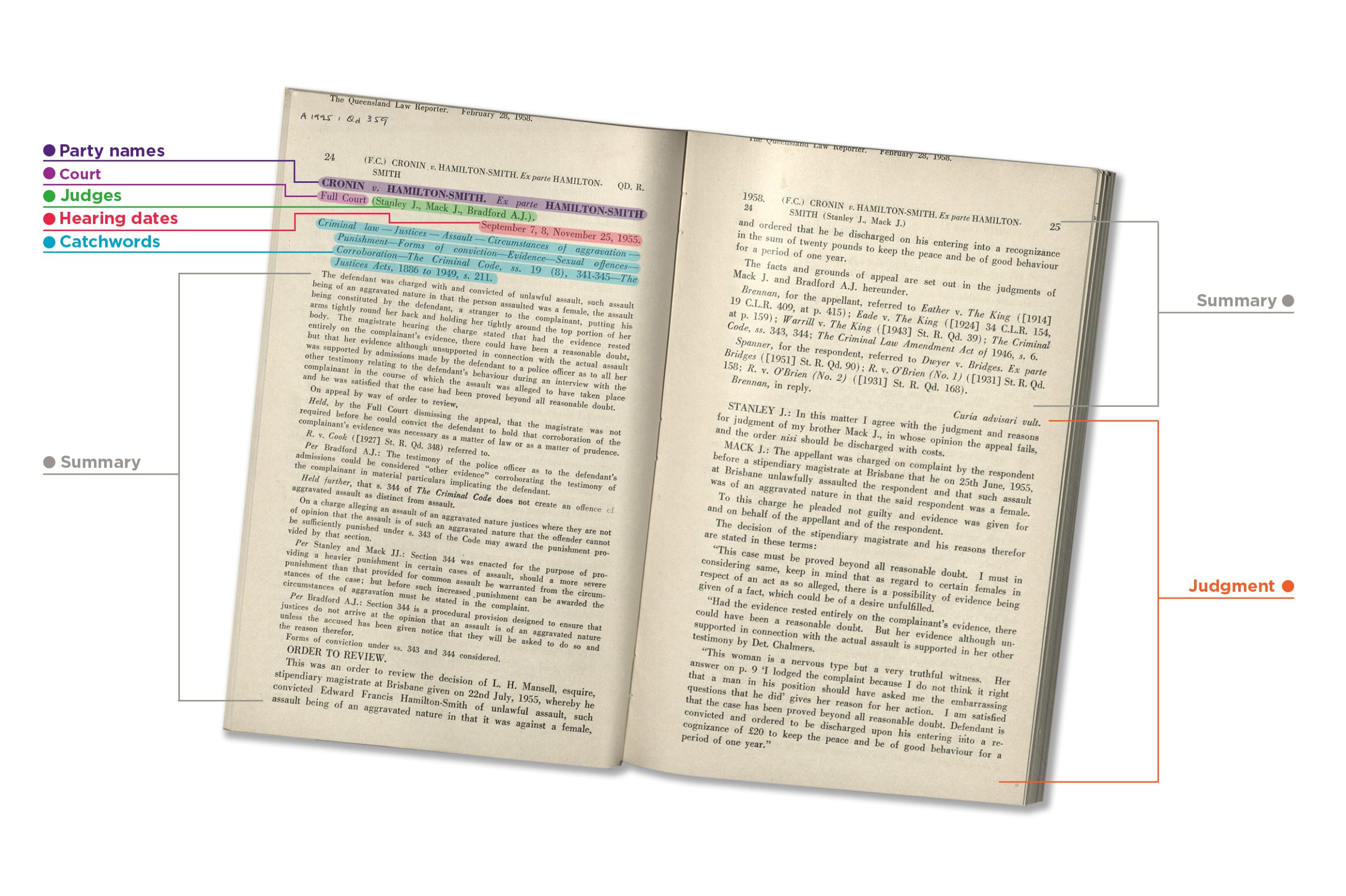10 What is Case Law?
A case, often referred to as a decision or judgment, is a written record of a judge or judges reasoning or decision-making applied to a particular dispute. When deciding cases, judges interpret legislation and apply the doctrine of precedent (stare decisis), which means the court must follow the decisions reached by a higher court in the same jurisdiction. For this reason, case law has precedential value and is sometimes known as common law or judge-made law.
Case law is a primary source of law in Australia.
Anatomy of a case
Understanding the different parts of a case is helpful for case law research. The figure below shows some of the key parts of a case.

- party names
- court
- judge/s
- hearing date/s.
Headnote
The headnote of the decision contains catchwords and a summary of the case. Catchwords are keywords and phrases separated by dashes, summarising the legal principles and legislation discussed in the case. The summary provides a short description of the matter and outlines the key holdings of the case.
The headnote is not officially part of the judgment.
Judgment
The start of the judgment proper is usually indicated by the Judge’s surname (e.g. Stanley J: …). Each judgment will generally include:
- the procedural history of the case
- statement of facts
- relevant legal issues and legal principles
- conclusion
- order.
Learning how to undertake a case analysis and distinguish the ratio decidendi is a core skill in legal studies.
Do not be tempted to read and quote only from the headnote rather than the full decision. It is important to note that the headnote is written by a law reporter and not by a judge. Therefore, it is not considered to be part of the judgment.

